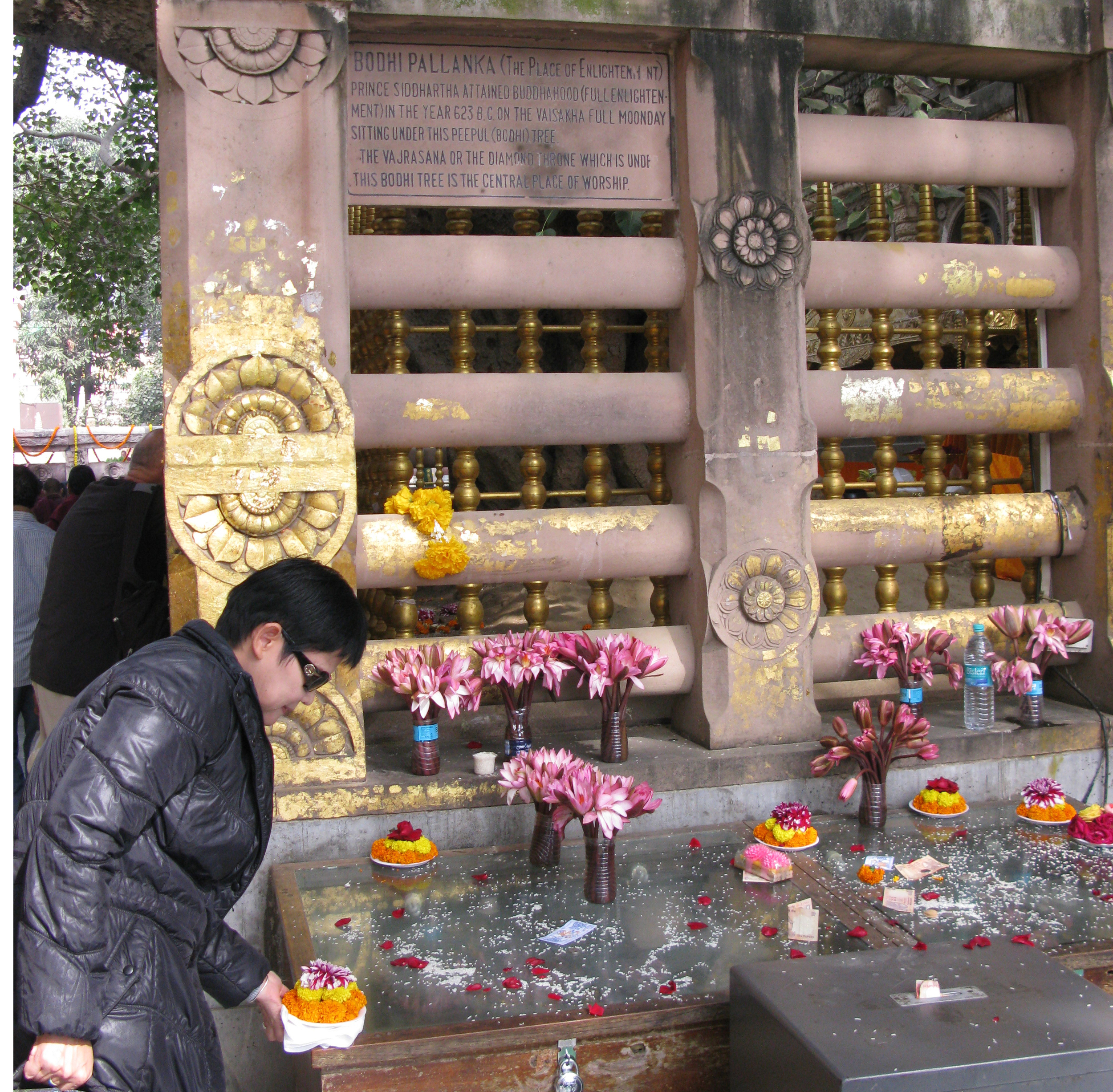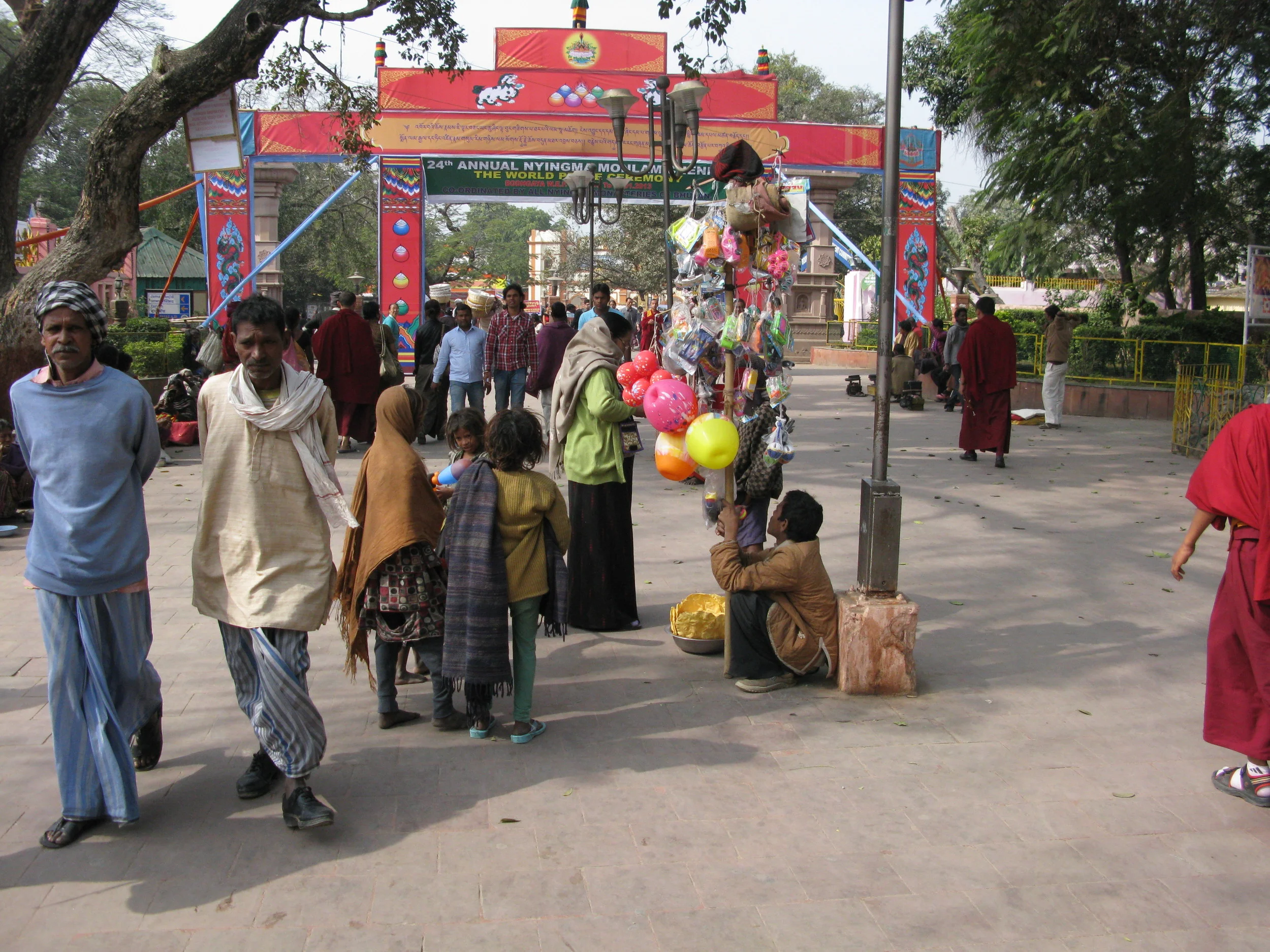
Self Portrait, 2013, Canon G-9, the entrance to the MahaBodhi Temple, Bodh Gaya, India. On our last day at the temple, we made offerings to the people along the path A little boy kept looking up at me hopefully, but by then I had run out of change. Not to worry. there was a table right there where Nyingma monks were taking donations to build a monastery. I gave a donation to them, and the change to the little boy. In return, to my surprise, the monk gave me a receipt and a red protection string. I began to lasso this around my left wrist in a clumsy fashion when a young Japanese woman offered to help me. After she tied the red protection cord around my wrist, she looked up with her lovely eyes and smiled directly into my heart. As I stumbled away, the little boy pointed to the barber who was waving for me to come over.
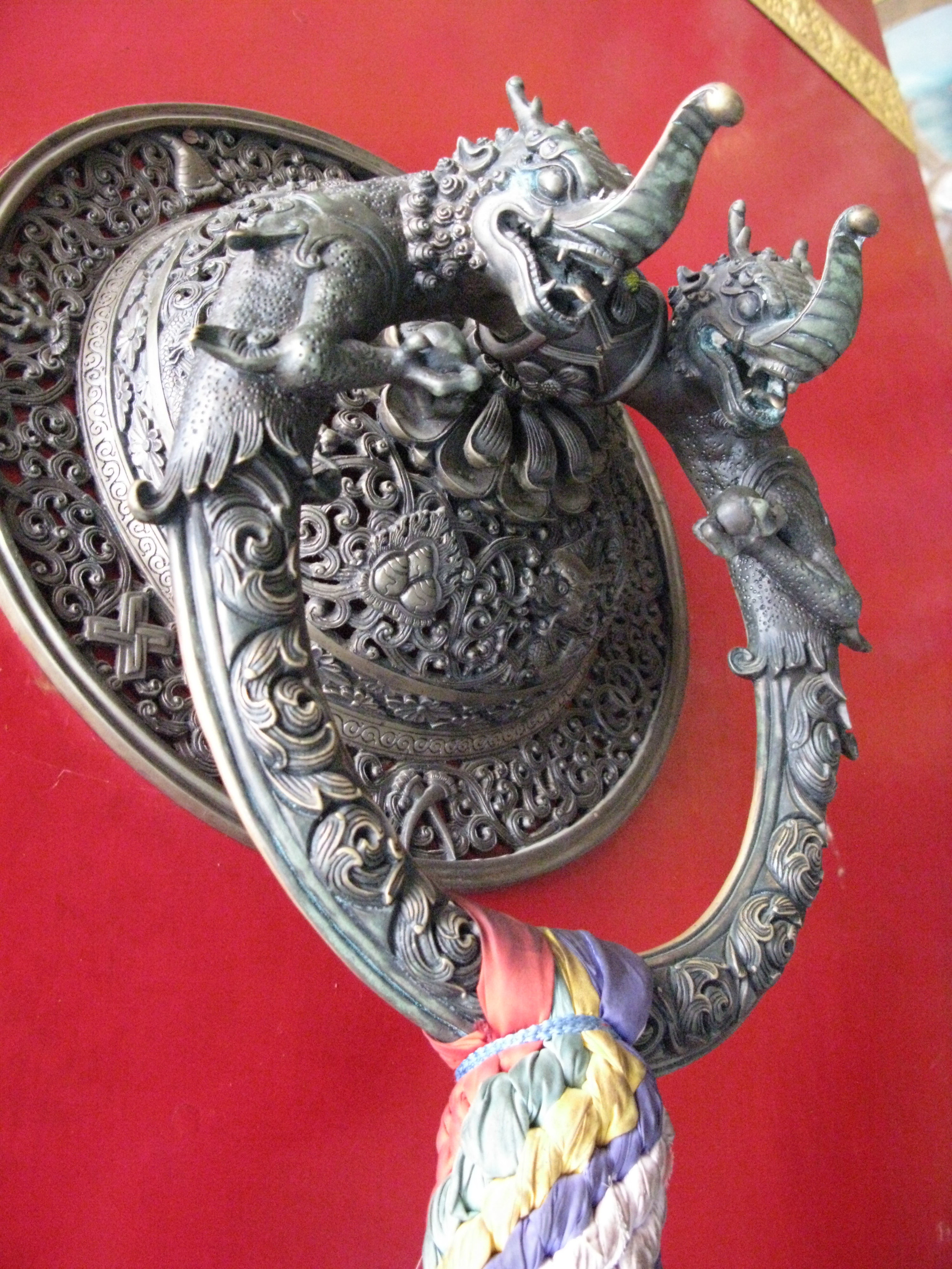
Temple door ring, Maha Bodhi Temple, Bodh Gaya, India. This looks like lost wax cast metal that has been "chased"to correct any casting defects and sharpen up any loss of form. An amazing realization of craft and artistic imagination.
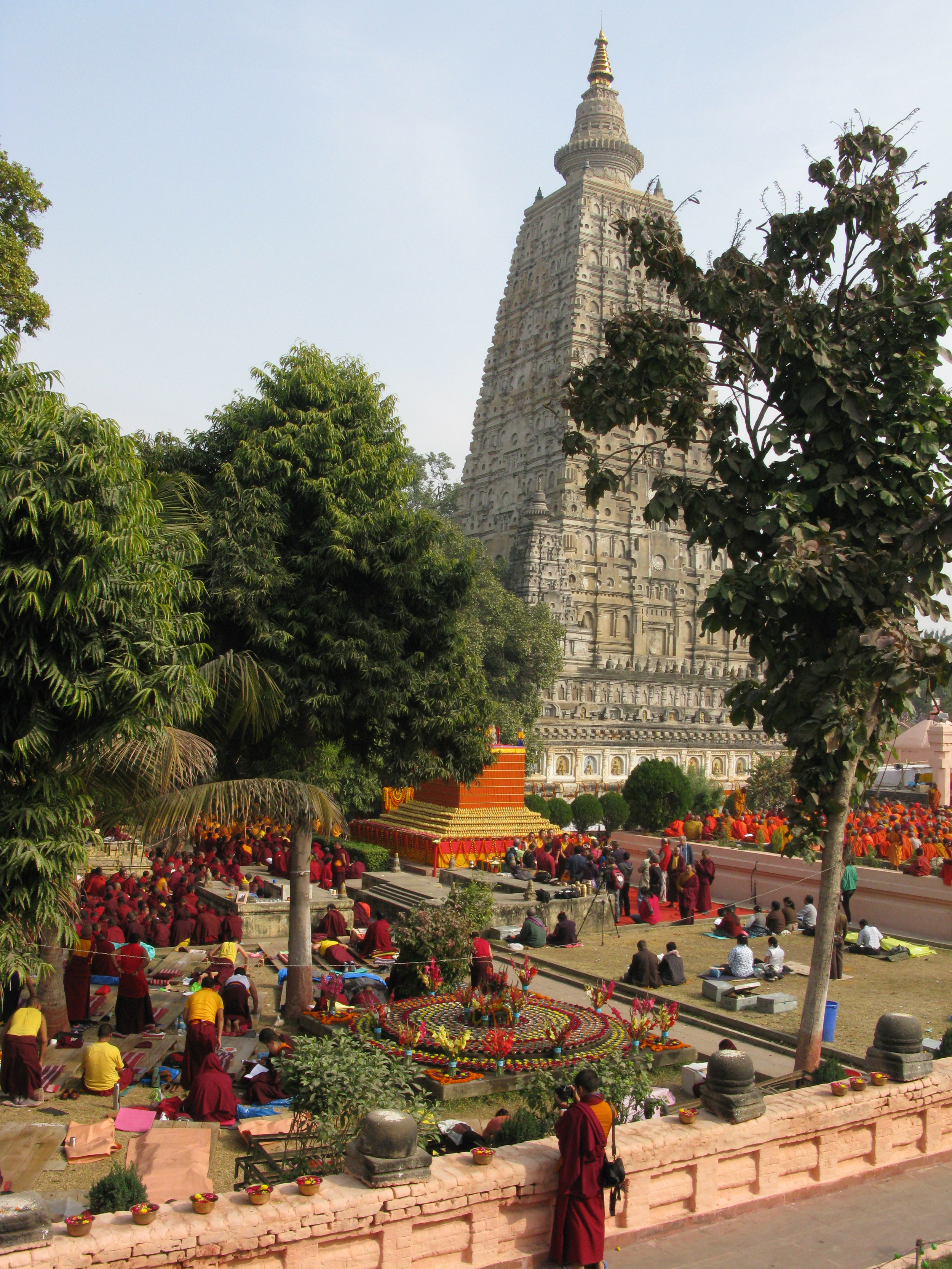
The Mahabodhi Temple seen from the upper most path almost 1/2 way around the temple. A timeless tableau of monks offering prayers and mantras for peace. The Vajrasana throne of the Buddha is under the Pipal tree immediately behind the Temple.
Pilgrims and monks from around the world circumambulate the temple, sometimes enveloped in mantras and prayers for peace during the Monlams. A wonderful blessing.
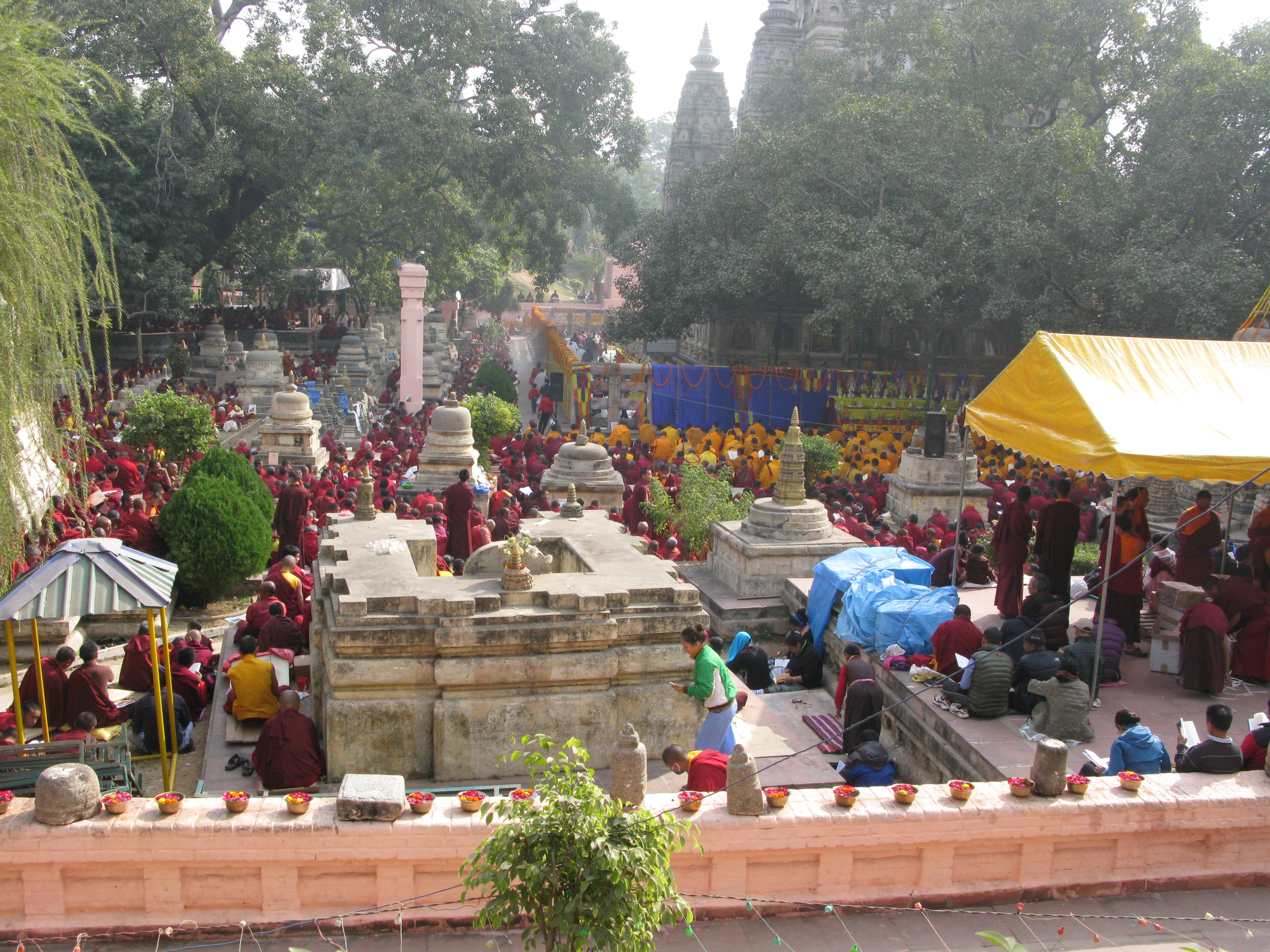
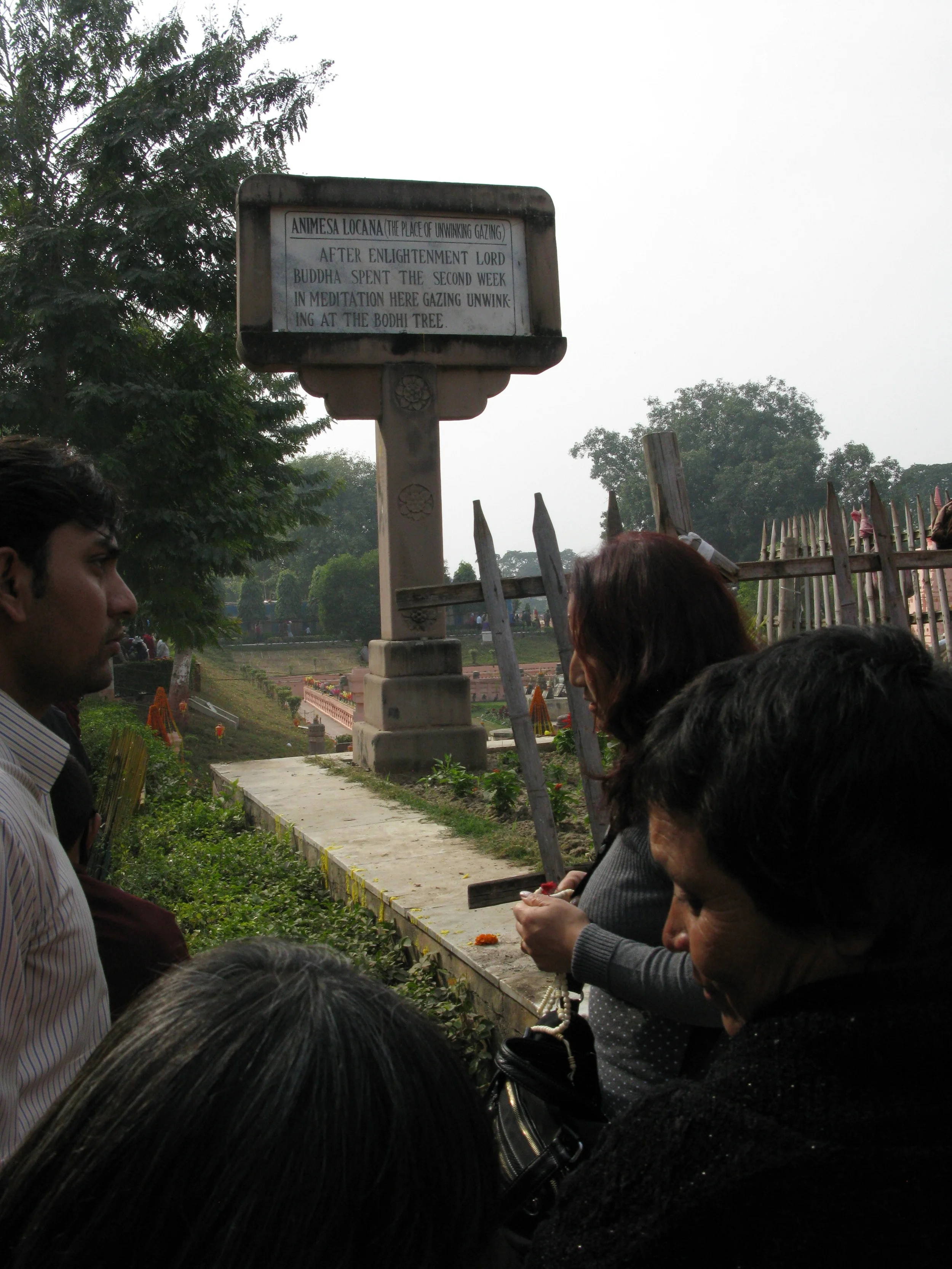
Stations of the Buddha
In Christan terms, this might be considered a "Station" of the Buddha"s enlightenment that is situated on the third circumambulatory(highest) path of the Mahabodhi Temple at Bodh Gaya, India. The inscription reads : "After enlightenment Lord Buddha spent the second week in meditation here gazing unwinking at the Bodhi tree".
After reading a modern day Lama's comments to avoid "unblinking" during meditation as that could harm your eyes, I mentioned to a friend that perhaps the unwinking Buddha was in a trance. My friend was greatly offended at my remark, vehemently retorting:"He is seeing the truth". Interestingly, I have no reason to doubt the Buddha's enlightenment. What I was trying to say was that it seemed that someone "added" the "unwinking" bit to the Buddha's story to give it more spiritual authority. I get the same sense when I see the word "Lord" placed before the Buddha's name(or anybody's name). The Buddha himself was a bit of a rebel, and asked his followers to test out the truth of his teachings for themselves, and not take his word for it...hardly the stance of a man who would be called "Lord"or insist that his view was the "Truth".
Of course, The Buddha might have in fact been "unwinking" even though that might have been bad for his eyes. We simply have to accept the Buddha's story as it is told, and make what we can of it. The fundamental concern here is the concept of "authority".
Since almost all authority, either spiritual , moral, or political, seems to be based on gibberish( "There is no singing school but studying monuments of its own magnificence."), it seems a safe bet to be a relentless iconoclast.
The problem with this stance is that whatever your culture, if a genuine spiritual event or teacher appears to you, you will ignore it or destroy it, and so dam yourself to an everlasting hell of meaninglessness.

The monks, nuns, and lay people here are taking refuge/making prostrations to the Buddha, dharma, sangha, and also perhaps to teachers and dharma protectors. There are offering mandalas of flowers and offering bowls filled with water and flowers everywhere. The sound of prayers and mantra also rose up from the entire temple grounds, especially surrounding the Vajrasana throne, that filled my being with a deep sense of reverence for life impossible to adequately describe.
Refuge is an integral part of any meditation practice. The question is...what do you take refuge in? Yongey Mingyur Rinpoche, a Tibetan Buddhist monk, writes extensively about refuge in his book: Turning Confusion into Clarity.



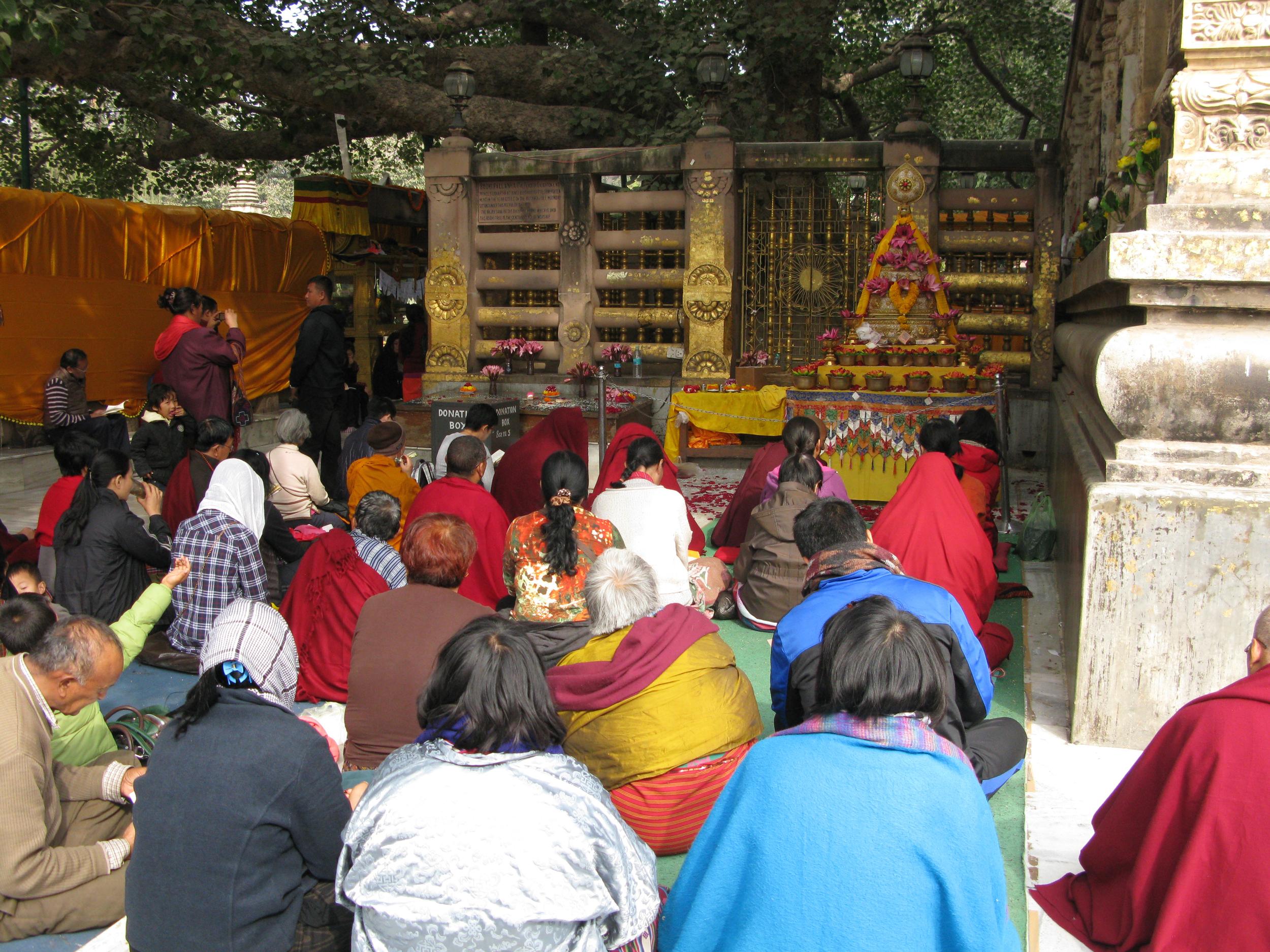
The Vajrasana Throne
This is the site of the Vajrasana Throne, the Place Of the Buddha's Enlightenment.
